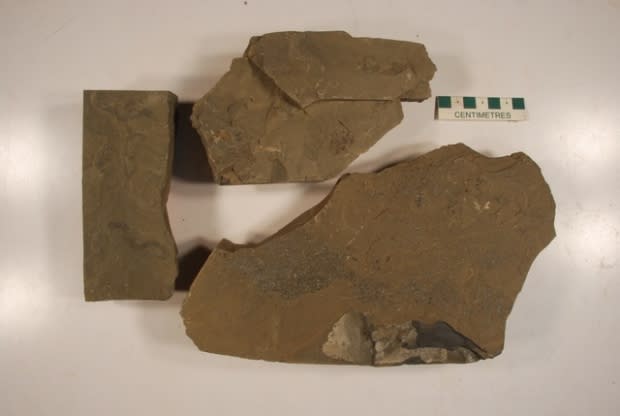Fossilized 'riot of worms' in N.W.T. rocks make scientists rethink ancient sea life
The discovery of fossilized worm burrows in ancient rocks from the Northwest Territories is challenging what many scientists have long thought about prehistoric life deep under the ocean.
A study published in the scientific journal Geology details that different sizes and types of worm burrows were found in sedimentary rocks similar to the Burgess Shale — a fossil-bearing deposit exposed in the Canadian Rockies.
Brian Pratt, a geologist and paleontologist who's a professor at the University of Saskatchewan, says it was a "lucky find" when he first came across the rocks on the western side of the Mackenzie Mountains while doing PhD research 35 years ago.
"I was hopping over a little creek on some stones and I saw quite distinctive greenish, grey-brown sort of shale pieces lying there and I hadn't seen that before."
Pratt said 500 million years ago during what's called the Cambrian period, or 270 million years before dinosaurs roamed, these rocks were the seabed. They were located 100 to 200 metres under water.

Researchers have since revisited the site to collect "hundreds and hundreds and hundreds of pounds" of samples over the years, Pratt said, but it was only recently that he decided to scan the rocks and digitally enhance the images.
"Luck played a big role," he said.
When Pratt looked at the images, he found the rocks were "riddled" with worm tunnels that had been invisible to the naked eye.
"I was really stunned," Pratt said. "I was absolutely shocked."
"I probably said something like 'wow' or 'holy smokes.'"

The finding is significant, Pratt explained, as it's long been believed that animals couldn't survive in the seabed because of a lack of oxygen.
"This just opened the door that it wasn't a few animals, a few worms and so on living there, but just a riot of worms. Tons of them."
While they can't prove there was always activity in the sea bottom, Pratt said his findings indicate that it's likely.
The discovery also raises questions about implications for the carbon cycle and the preservation of organic carbon which eventually becomes petroleum.

During the Cambrian period there was an "explosion" of life in the oceans including worms, clams and snails, Pratt explained. Until now, it's been believed that these creatures were preserved as fossils because a lack of oxygen at the sea bottom stopped decay and no animals lived there to eat them.
He said the same technique could be used on shale rocks from other periods to see if there was also animal activity in the sediment.

